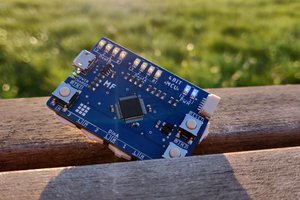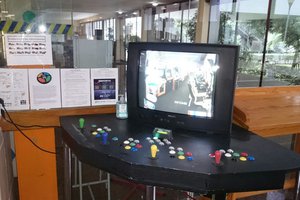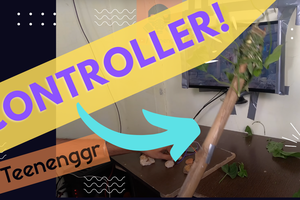WARNING: THIS PROJECT IS DEPRECATED
You can find an enhanced fork at https://hackaday.io/project/189223-enhanced-arcade-joystick-x4-simon-says-game
1 Introduction
1.1 Motivation
Thanks to the emulators available nowadays I was able to make my own arcade cabinet. Although I employed genuine arcade joysticks and a vintage CRT display I didn’t get the same feeling that playing the original arcades. When playing the original, death was dramatic: if you "died" in the game and you wanted to continue playing you had to spend a valuable coin. Since emulators let you simulate the insertion of a coin just by pressing a key, in practical terms you have unlimited lives and the feeling is lost. To solve this I devised a joystick system with an integrated credit counter. The system disables the insert coin buttons unless credits are available and includes a little challenge that must be won in order to obtain them.
1.2 The challenge
It is the Simon says electronic game created by Ralph Baer and Howard J. Morrison in 1978. The following description of the game has bee taken from wikipedia (https://en.wikipedia.org/wiki/Simon_%28game%29):
The device has four colored buttons, each producing a particular tone when it is pressed or activated by the device. A round in the game consists of the device lighting up one or more buttons in a random order, after which the player must reproduce that order by pressing the buttons. As the game progresses, the number of buttons to be pressed increases.
As in the original Simon says game there are several skill levels. The number of credits obtained when the game is won will depend on the selected skill level.
1.3 Features
- Includes four arcade joysticks using just an USB connector.
- No special drivers are needed.
- Each joystick have six generic buttons, a start button and a backlighted insert coin button.
- The insert coin buttons are also employed in an integrated Simon says game in order to obtain credits.
- The insert coin buttons are disabled when there are no credits available.
2 Usage
When connecting the system to your computer it will recognize a set of joysticks. No special drivers should be needed. However, if the system is going to be used with arcade emulation software you will need to configure the emulator properly. First you will need to set the first four detected interfaces as the joysticks of the players 1, 2, 3 and 4. Also you will have to set the last button of each joystick as insert coin button. The fifth interface is used for interacting with the emulator and is not linked to any joystick by default (see the next section). You will have to configure its buttons for tasks such as pausing the emulation, resetting the emulated system,etc.
2.1 Interacting with emulators
Sending commands to the emulator (for example to pause or quit the emulation) requires setting one of the joysticks as emulation controller. To do so, while pushing the white backlighted button, push the insert coin button of the joystick to be set as emulation controller. That button will light up to indicate that the associated joystick does not work as game controller anymore. Its buttons will have associated the functions you configured in the previous section. If you want to change the joystick to be used as emulation controller repeat the previous step but pushing the insert coin button of another joystick. You can make the joystick used as emulation controller work as game controller again. To do so just press its insert coin button again while holding the backlighted white button pressed. After that the insert coin button will light down.
2.2 Getting credits
In order to obtain credits you will have to play the embebed Simon says game by following these steps:
- Push the white backlighted button. All the insert coin buttos will light up.
- Select the skill level by pushing one of the backlighted buttons. The following table describes each skill level.
![]()
- The system will generate sequences of lights and sounds....
 SCART VADER
SCART VADER

 danjovic
danjovic
 Martin
Martin

 tinandjar
tinandjar